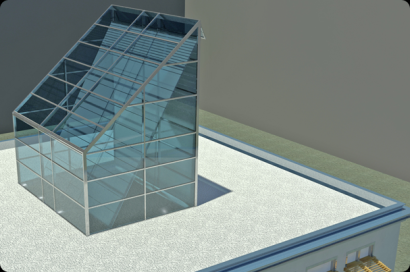
Many residents use fireplaces to heat their homes without relying on fossil fuels. Fireplaces also present economic and health concerns, which limits their safety rates. Environmentalists designed solar chimneys as an alternative HVAC feature.
Solar chimneys are green technologies enhancing natural heating and cooling features. It is a passive HVAC feature, which supports energy-efficient building designs. The chimneys are black and attract high levels of solar radiation.
Installation professionals generally place a solar chimney’s black wall facing the south. The structures are affordable and easy to install. They can cool buildings by collecting and forcing warm air out of the chimney because warm air rises.
Solar chimneys warm homes by forcing warm air down the chute into a room. The chimneys also increase ventilation by using natural temperature differentiations to circulate indoor air. Residents are investing in solar chimneys to increase their properties’ temperatures without generating smoke.
Heating and cooling systems use about 48% of a resident’s energy supply. Individuals can reduce their utility costs and shrink their carbon footprints by installing solar chimneys. Green building features improve residential safety and environmental conservation.
One significant benefit of solar chimneys is residential safety. Traditional chimneys increase individuals’ risk for house fires. Combustible materials may enter a chimney as debris moves above.
The combustible debris can catch fire as internal chimney temperatures rise. Solar chimneys prevent residential fires by minimizing internal heat. They also rely on zero flames, which residential fire risks.
Solar chimneys are also safer for residents because they eliminate their exposure to smoke. Wood smoke increases individuals’ risk of lung cancer after a few hours of exposure. Residents can protect their lung health by investing in solar chimneys.
Solar chimneys also protect the environment by limiting greenhouse gas emissions. Traditional fireplaces rely on wood to produce heat. Burning wood releases carbon dioxide into the atmosphere, which causes the enhanced greenhouse effect.
Powering home heaters with wood also impacts deforestation. Clear-cutting forests limits Earth’s natural carbon filtration process. It also degrades natural habitats, which increases species’ risk of endangerment.
Other fireplaces rely on gas to generate heat. Gas-powered fireplaces cause combustion-related greenhouse gas emissions. Individuals can install solar chimneys to decrease atmospheric degradation.
Solar chimneys also preserve forests and protect endangered species. Using solar energy to power HVAC features reduces society’s reliance on fossil fuels. Phasing out fossil fuels may significantly increase global sustainability levels.
Individuals can install solar chimneys by identifying accessible funding options. The renewable energy tax credit may help residents pay for upfront fees and installation costs. Individuals can access a 26% credit when signing up before 2023.
The U.S. government also offers a solar investment tax credit (ITC), which supports clean energy projects. Residents can sign up for the ITC and cover an additional portion of their chimney purchase. Diversifying clean energy sources can help regions achieve their emission-reduction goals.
Different American states have independent clean energy goals. D.C. plans on sourcing 100% clean energy by 2032 through expanding renewable power supplies. California also established ambitious clean energy goals to create 100% emission-free electricity by 2045.
Regions can generate ample renewable energy supplies by diversifying production sources. They may also minimize their reliance on fossil fuels by investing in alternative power supplies. Adopting advanced green technologies can also help individuals achieve sustainability goals.
Thousands of Americans die in house fires every year. Using solar energy to heat homes decreases their flammability. Reducing local emissions can also help save lives.
Smog, heat island effects and general air pollution increases individuals’ risk of health conditions. Preventing residential fire risks and protecting society’s lung health can lower global mortality rates.

